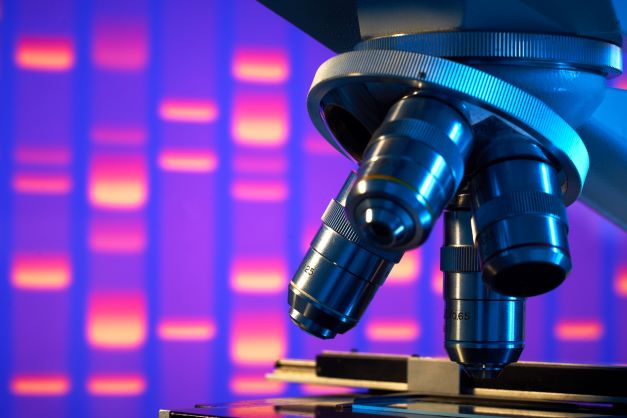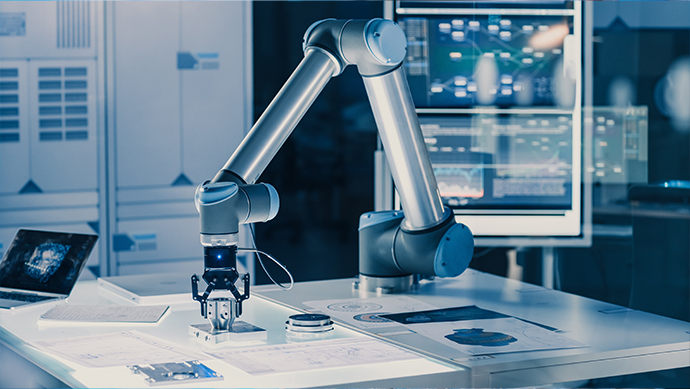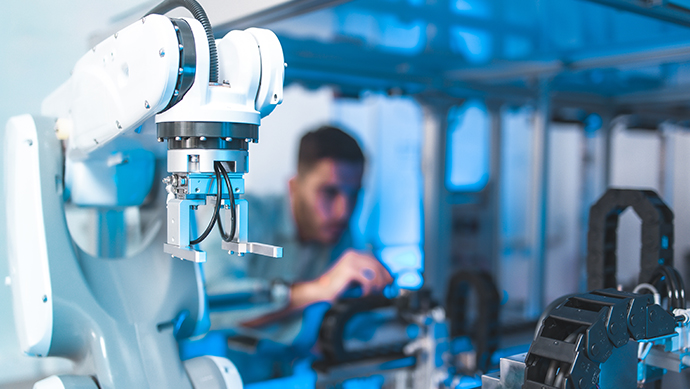Standardisation in Lab Automation: Working Towards the Integrated Laboratories of the Future

The integration of laboratory data is a major obstacle for the implementation of a holistic, interconnected research environment. Many research leaders over the years have highlighted the need for a consistent approach to data usage and sharing. This led to the genesis of the consortium for Standardisation in Lab Automation (SiLA) – a not-for-profit organisation formed by software and hardware suppliers, system integrators, and pharma and biotech companies.
Many experiments inherent to the development of new treatments are repetitive and expensive to run. Lab automation has subsequently become instrumental to the progress of life sciences, freeing up valuable time for research. However, combining equipment from different providers to work in concert often proves impossible. This leads to a waste of resources, and available equipment may have to be replaced for compatibility reasons. SiLA allows researchers to focus on scientific questions by reducing equipment connectivity to a minimum.
A panel at Oxford Global’s Mobile Robotics conference in April 2022 explored some the applications of SiLA and investigated how soon researchers could see them implemented in their laboratories. The panel was headed by Carl-Helmut Coulon, Head of Future Manufacturing Concepts, INVITE GmBH. Our panellists were Antje Schmelzer: Head of the Center of Excellence, RobotiX, Boehringer Ingelheim; Patrick Courtney, Leader, European Working Group on Laboratory Robotics and Member of the Board of Directors, SiLA consortium; and Andy Cooper, Professor, Director of the Materials Innovation Factory, University of Liverpool and CEO, Gearu Ltd.
End-to-End Laboratory Automation
Coulon began by asserting he believed that if an integration-level software solution was created, this would be the solution to the task of laboratory automation. “As to this hypothesis, I will start with you, Antje. What do you think of this?”
Schmelzer replied that she felt there was a need to define a standard in data handling and conveyance. “It is very important that we are defining an industry standard, that we talk about it and that we have data integrity along the road – chain to end,” she said. “We need to ensure that it’s valid data, because everything that’s not documented is not done and we can’t really use it.”
Courtney assented, adding that the handling process would require a transfer of knowledge. “I think at the moment there’s a lot of confusion about standards. A big argument is that it stifles innovation – which I’m sure it can do – but the big argument I’ve seen is that R&D has different needs relative to the factory standard.” He added that the processes and requirements in laboratories were more flexible than in factories for mass production. “You’ve maybe got fewer assets and equipment at risk so you can live with something that’s a bit more flexible, which is where SiLA grew out of.”
Courtney added that the transition from an idea in R&D to a full-on scale-up required a transferral of some of that knowledge across. Cooper highlighted the fact that not all robots are native-robot operating system (ROS) compatible, but added that many are. “I would say there’s no need to reinvent the wheel here. To me, ROS seems like quite an appealing platform because it already works across a mixed economy of robots.”
Inter-Laboratory Standardisation
For the inter-laboratory standardisation envisioned by groups such as SiLA to work, the methodology being standardised should operate on the lowest level. One issue is if standards are not being used in the total environment – if not all manufacturers of equipment accept this standard. Schmelzer suggested taking a step back from thinking about the whole architecture to start at the beginning. “Why do we want standards?”, she asked. “The problem is for us, when we introduce robots, we have a concept in mind for our laboratory.”
- Lab Digitalisation: Automation, Transformation, and the Smart Labs of the Future
- Digital Transformation in the Lab: Paperless and AI Technologies
- Discussion Group Report: Overcoming Digital Fatigue
Schmelzer continued that she did not want to be bound to just one area in terms of digitisation. “I want to use different suppliers because I have different use cases and business cases in my mind. But the architecture and the holistic view must fit.” She added that in an ideal scenario, laboratories would be able to integrate the different layers of a system together. “To me, that’s why we need an industry standard.”
Courtney suggested that a factor for consideration was the composition of the suppliers of laboratory technology. “I think we talk about the suppliers as though they were a homogenous group and of course they’re not,” he said. “Within the larger companies, they have an aggregation of different companies that have been acquired, so they also have an interest in their devices talking to each other.” Courtney also found that smaller start-ups tended to be more dynamic in how they operated. “The different players within the supply chain have quite different motivations,” he added.
Standardisation in Physical Integration
Broadly, there is a need across the laboratory data industry for standardisation in physical integration. An audience member called for instrument manufacturers to start outfitting their devices with standardised equipment, putting in place adaptation from the first point of manufacture. “I think there is a need for digital standards, and I think it will probably happen for everybody in the end,” said Cooper. “I’m much less confident about physical standards, and there’s little precedent for it.”
Cooper then pointed to other types of automation from previous procedures, arguing that they had not coalesced into one approach. “The idea of being able to simply teach a system – or have a system teach itself where the model is – that’s a really good idea. But I think different companies will approach that in different ways. I can’t imagine there just being a standard.”
Courtney held up a small plastic device. “We’ve done it before.” This is a 96 well plate, which is used in almost all labs, and works with machines from a wide range of instrument suppliers thanks to the commonly agreed footprint. “And there is a large choice of plate types, materials, etc on the same footprint. This device footprint was standardised by the community working together, and is now an ANSI standard. It was not an easy journey but it was done. So the footprint is standardised, but the holder for the plate – the nest - is currently not standardised.
“Robots sometimes have trouble grasping plates,” continued Courtney. This is the subject of discussion now, and there is an initiative to share a common, open source, nest design. “We can make it better but keep it compatible,” he added. “It will be little steps over a long time, but I’m proud about what we’ve done, or what our predecessors have done.”
“I don’t want to waste time with developing interfaces, I just want to start work. If it’s too expensive to develop a robot, I will just hire another person to do the same job.”
“It’s helping everybody,” Schmelzer agreed. “And the company that produced the machines and equipment pushed the development, because when everybody can use it then everybody can develop their own applications and interfaces.” She followed by outlining a very no-nonsense approach to her work: “I don’t want to waste time with developing interfaces, I just want to start work. If it’s too expensive to develop a robot, I will just hire another person to do the same job.”
Future Automation of Mono-Tasks for Lab Standardisation
Concluding the panel discussion, Coulon asked the panel if it would be possible to enable laboratories to automate the mono-tasks by themselves. “Is there a number that comes into your head regarding how many years from now you think we could expect this ability to execute such a level of automation just around the lab itself?”
“Unfortunately, I left my crystal ball at home,” replied Schmelzer, “so that’s very hard to answer because there’s a difference between ‘technically possible’ and ‘authorised’. The pharmaceutical industry is for good reasons very careful – we’re not the bravest with new things and always prioritize patient safety.” Courtney agreed that the industry was slow to adapt to change, adding that the change would likely come from smaller pioneering companies willing to break the rules.
“Maybe within some specific very well-defined areas it could be ten years, maybe five years,” added Cooper, “but as we were discussing earlier, different units function at different levels of maturity.” What does the future hold for integrated laboratories? Stay tuned to find out.
Head over to our PharmaTec portal to read more Insight articles covering the latest advances in Pharma Data and Standardisation in Lab Automation. If you’d like to register your interest in our upcoming SmartLabs UK: In Person conference, visit our event website.





.png)

